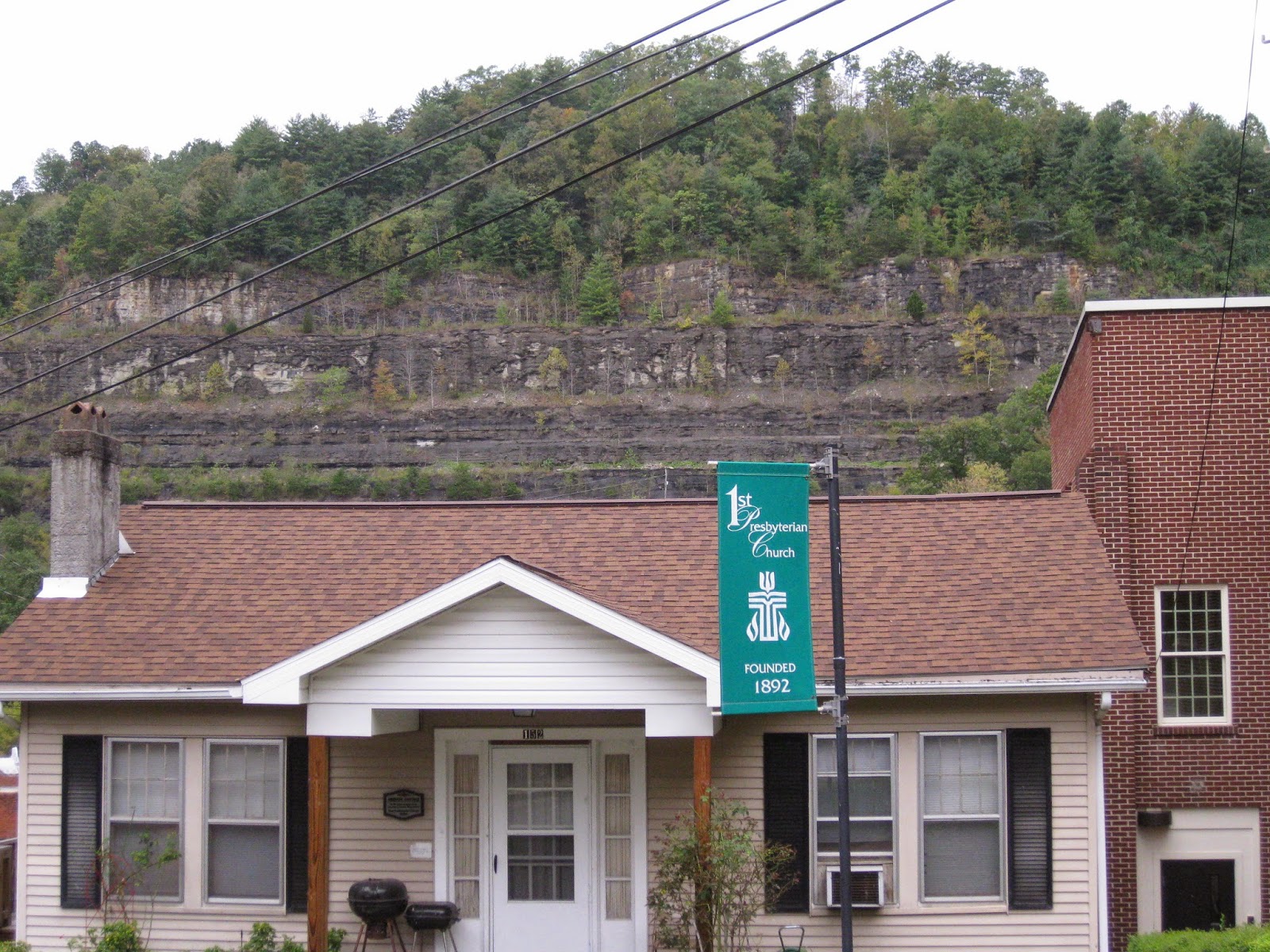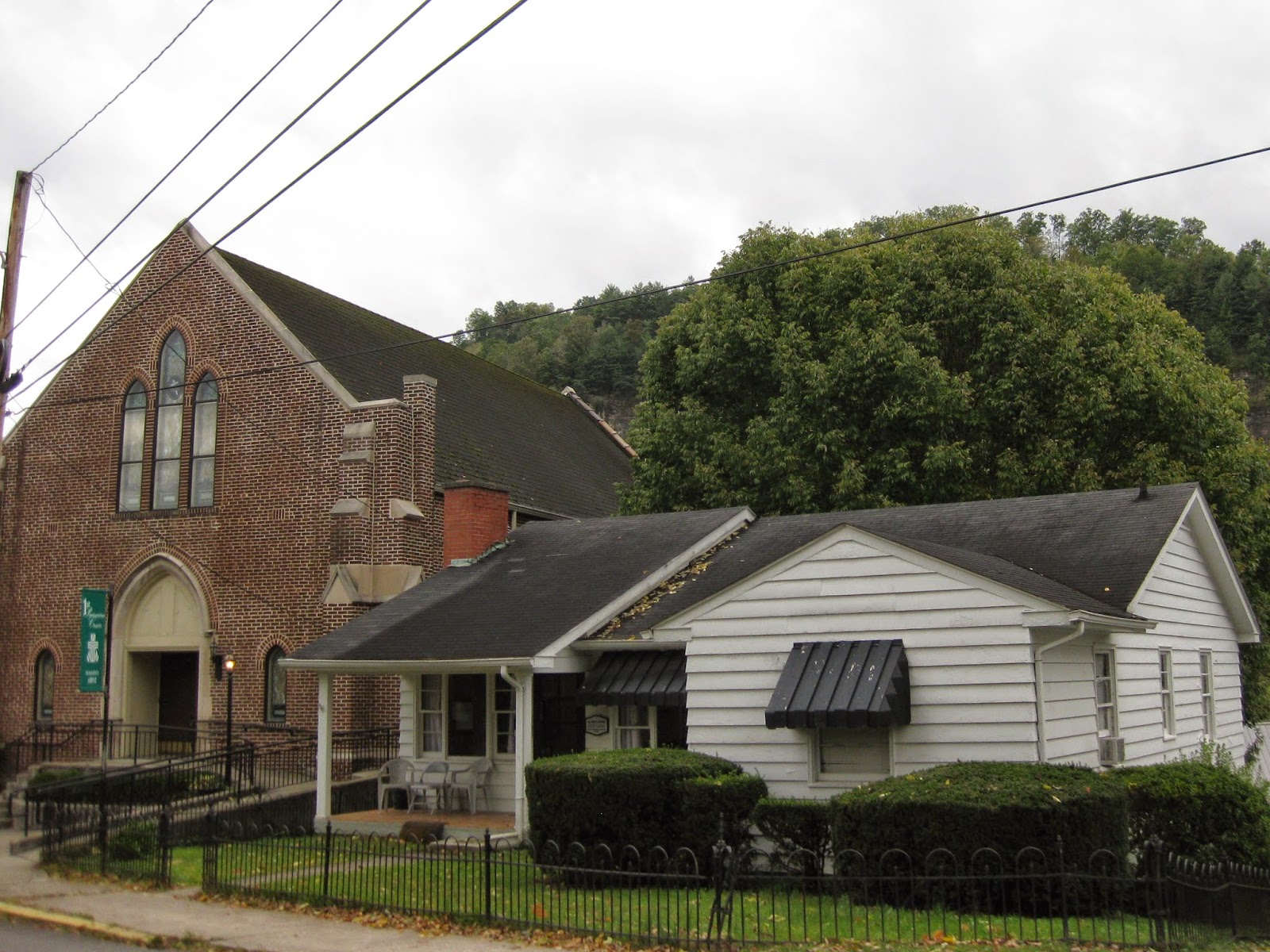I had the opportunity to travel with a group from First Presbyterian Church of Neenah, Wisconsin to spend a week Hazard, Kentucky to serve by building and repairing homes.
Hammerin’ in the Hills, a volunteer program of the Housing Development Alliance, gives people from across the country the opportunity to change lives in the Appalachians of Kentucky. Whether volunteering for a whole week or just a long weekend, volunteers work with HDA carpenters to help Appalachian families have a warm, safe and affordable places to live. Over 20 years, 529 volunteers have volunteered 7744.5 hours.
Volunteers work on various phases of construction, including moving dirt, building retaining walls, digging trenches, clearing rocks, digging footer drains, framing floors and walls, installing floors, shingling roofs, painting, and landscaping.
The Housing Development Alliance incorporated as a non-profit organization in 1993 to serve as lender, counselor, developer, and contractor for low-income persons in need of housing assistance. The mission of the Housing Development Alliance is to strengthen communities through creating high quality, long lasting, affordable homes.
 |
| Housing Development Alliance headquarter across the street from |
The Housing Development Alliance strives to develop a variety of housing options including shelter for the homeless; transitional housing; affordable rental housing; repair and rehabilitation of existing homes; and affordable new homes for persons with low and very low incomes. Since 1993, they have built over 192 new homes, provided over 447 home repairs, operated 35 rental units and invested over $30 million into the local economy. The Housing Development Alliance provides 25 direct jobs and support 50 more jobs with subcontracted labor.
The Housing Development Alliance serves people at or below 80% of the Area Median Income in Perry County, and parts of Breathitt, Knott and Leslie Counties. Perry County’s poverty rate from 2008-2012 was 25.8%. Knott County had a 24.1% poverty rate, Leslie County had a 21.1% rate and Breathitt had a 31.4% rate, compared to a rate of 18.6% for Kentucky and 14.9% for the US. The 2010 census recognized 429 counties as being persistently poor with poverty rates of 20 percent or more in 1990, 2000, and 2010 including 43 in Kentucky. All four counties served by the Housing Development Alliance have been designated as distressed Appalachian Counties by the Appalachian Regional Commission.
There are many contributors to Eastern Kentucky's poverty: corruption, parochial politics, isolation, environmental degradation, exploitation of vast natural resources by absentee owners who return little. Providing housing for families can serve as a gateway to success. Housing has been found to be a common factor, as well as a causal factor, for many other social issues such as lack of access to education, healthcare, or adequate food supply.
As a partner of the Housing Development Alliance, First Presbyterian Church of Hazard acts as a host for groups coming into the area to lend a helping hand. Larger groups stay at First Presbyterian in various Sunday school and fellowship rooms with use of the church's kitchen.
 |
| The Mission Cottage, to the left of the church, is a fully furnished two bedroom house with 4 sets of bunk beds, a kitchen, and a bath. |
Coal companies built “coal patch” or "coal camp" villages and towns near their coal mines throughout Kentucky and other coal mining states. Coal patch villages and towns differed from other villages and towns in that they were not incorporated, did not have elected officials and were wholly owned by the coal company which controlled who lived within their confines. Coal company owned housing ran the gamut from well maintained bungalows to little more than tarpaper covered shacks.
 |
| Bluegrass coal camp, Hazard |
The coal company generally provided lots for churches and schools to be built.
 |
| School at Storm King Coal Co. Camp near Hazard, KY 1920. (Notice that none of the students are wearing shoes.) |
Hills, hollows, and a lack of improved roads meant isolation for the mines and coal patch towns of Kentucky well into the 20th century. For those miners not living in company housing, getting to work could mean walking miles to the mine where they worked and then home again after a long day of physically exhausting work underground. Early on the rivers, and later the railroads, were the main means of travel between towns, other than by horse or walking, until the mid-twentieth century when improved roads became common.
Many men became coal miners because their fathers and grandfathers had been coal miners, either in the U.S. or in Europe before emigrating to the United States. Wages for coal miners were low and often irregular. In times of decreased demand, or when stockpiled coal exceeded immediate demand, coal companies cut the number of days the miners worked, especially during the hard times of the 1930s. The miners and their families still had to eat and pay for housing so they went into debt to the company against future wages. A miner could draw upon his outstanding wages in company scrip in the form of tokens that could be used only at the company store.
 |
| Blue Diamond Coal Co., Hazard |
MIners faced hazardous job conditions including hazardous rock falls, methane and coal dust explosions, underground fires, run-away coal cars, black lung and a myriad of other dangers. Explosions in coal mines are generally caused by methane gas or coal dust being ignited by an open flame or spark. The best means of controlling methane is through proper ventilation of the mine workings. Nationwide, in the years 1900 to 1910 there were an average of more than 2,000 coal mine fatalities annually. In 1910, Congress created the U.S. Bureau of Mines within the Department of the Interior to deal with mine safety. By 1912, eight mine rescue stations had been established to provide safety, first-aid and mine rescue training, and to assist in mine rescue efforts nation-wide. For a long time there was no Workers Compensation or disability payments for miners injured on the job. Any miner who was injured and could not work received nothing from the coal company.
Mines in Central Appalachia have become increasingly uneconomical as natural gas and coal mined in Wyoming and Illinois have become cheaper. Mine closures and layoffs are reshaping the heart of the Central Appalachian coalfields. Mine Safety and Health Administration data reveals that the picture is bleakest across a swath of 26 counties in Kentucky's eastern coalfields, where coal has been the lifeblood for more than a century.
Competition among mines has heated up. It costs utilities about 40% more to generate the same amount of electricity using the region's coal compared with coal from Wyoming, according to industry analysts. Coal from Wyoming doesn't generate as much electricity per ton and costs more to transport. Still, it is a better deal for utilities because the costs to mine coal from seams 60-feet thick are far less. In Central Appalachia, the region's coal seams are thinner, and so are mining companies' profit margins. Even West Virginia and Virginia have some advantages over eastern Kentucky. They possess higher grades of coal, including more reserves of metallurgical coal used in steelmaking. Less direct rail routes out of eastern Kentucky also make its coal more expensive to transport.
The region's troubles run deeper than the rest of Central Appalachia and are accelerating. Eastern Kentucky, which produced more than 128 million tons of coal in 1990, mined just 45 million tons in 2012. That was a decline of more than 18 million tons from 2011's output, the biggest single-year drop in records dating to 1984. The coal industry is notoriously cyclical. These counties have suffered and bounced back before, but local officials say the current bust is like none that have preceded it.
The number of coal-mining and related jobs in the region remained fairly steady between 2000 through 2011, fluctuating from one quarter to the next by an average of about 400 jobs, but never dipping below 11,400. Since 2011, the area has seen a continuing decline that left eastern Kentucky with 8,000 mining jobs by the second quarter of 2013.
Stepped-up regulations to tighten emisions for coal-burning power plants have exacerbated a market depression brought about by new fracking technologies that have revolutionized natural gas drilling making it possible to tap massive reservoirs of gas from deep shale layers. Coal accounted for 39% of U.S. electricity generation through August of 2013, compared to 27% for natural gas. In 2003, coal had powered 51% of generation, compared to 17% for natural gas. Utilities have frequently cited new emissions standards among reasons for closing aging coal-fired power plants. Roughly 9% of coal-fired capacity is slated for closure between 2013 and 2018, according to the Energy Information Administration, resulting in coal's share of electricity generation continuing to fall over the next few decades.
Attempts to diversify the economy will not help unemployed miners and the local businesses they have been supporting in the short term.
As the t-shirts they handed out to volunteers to celebrate 20 years remind us:
“In every community, there is work to be done.
In every heart, there is the power to do it.”
~Marianne Williamson










No comments:
Post a Comment